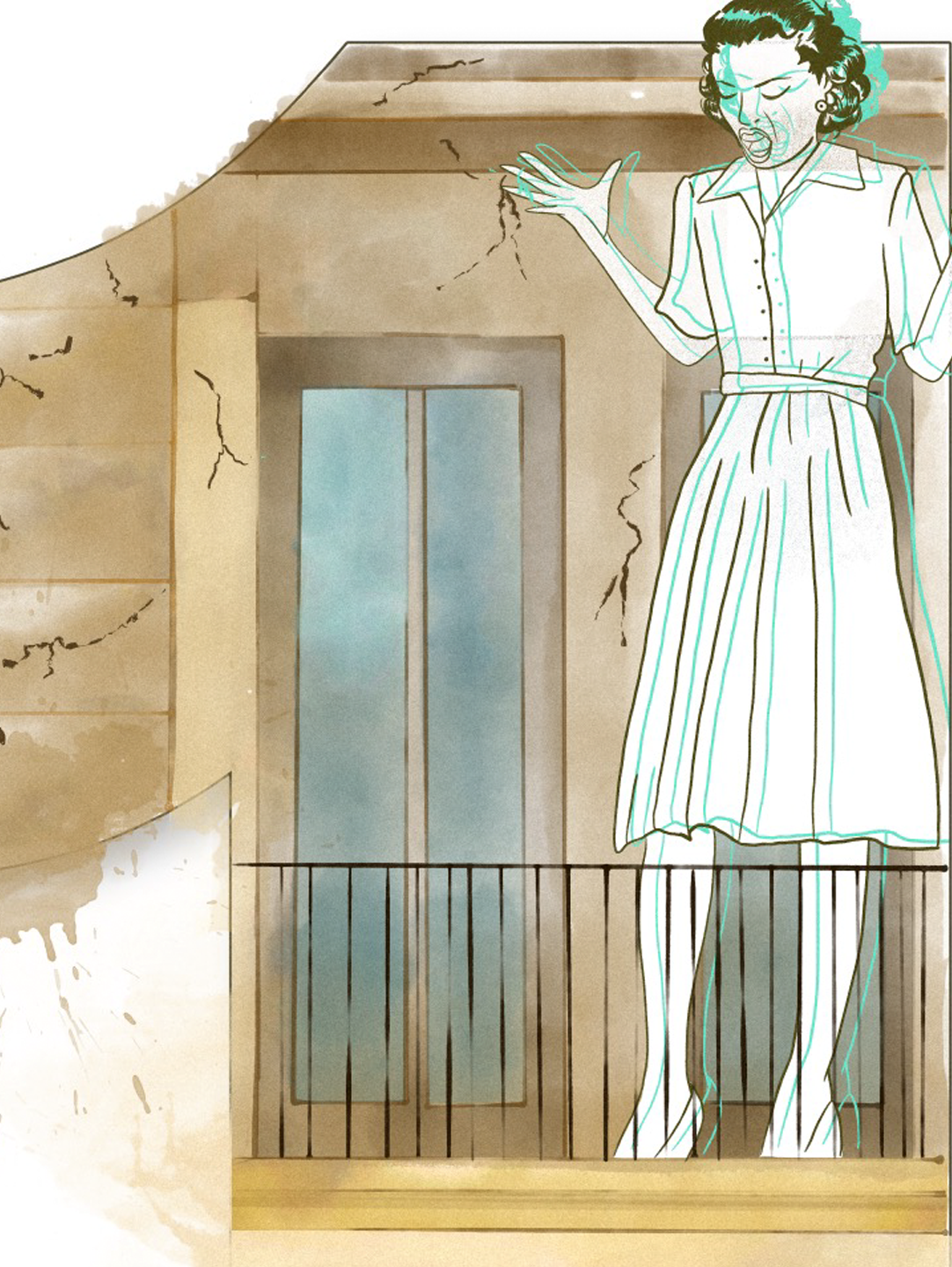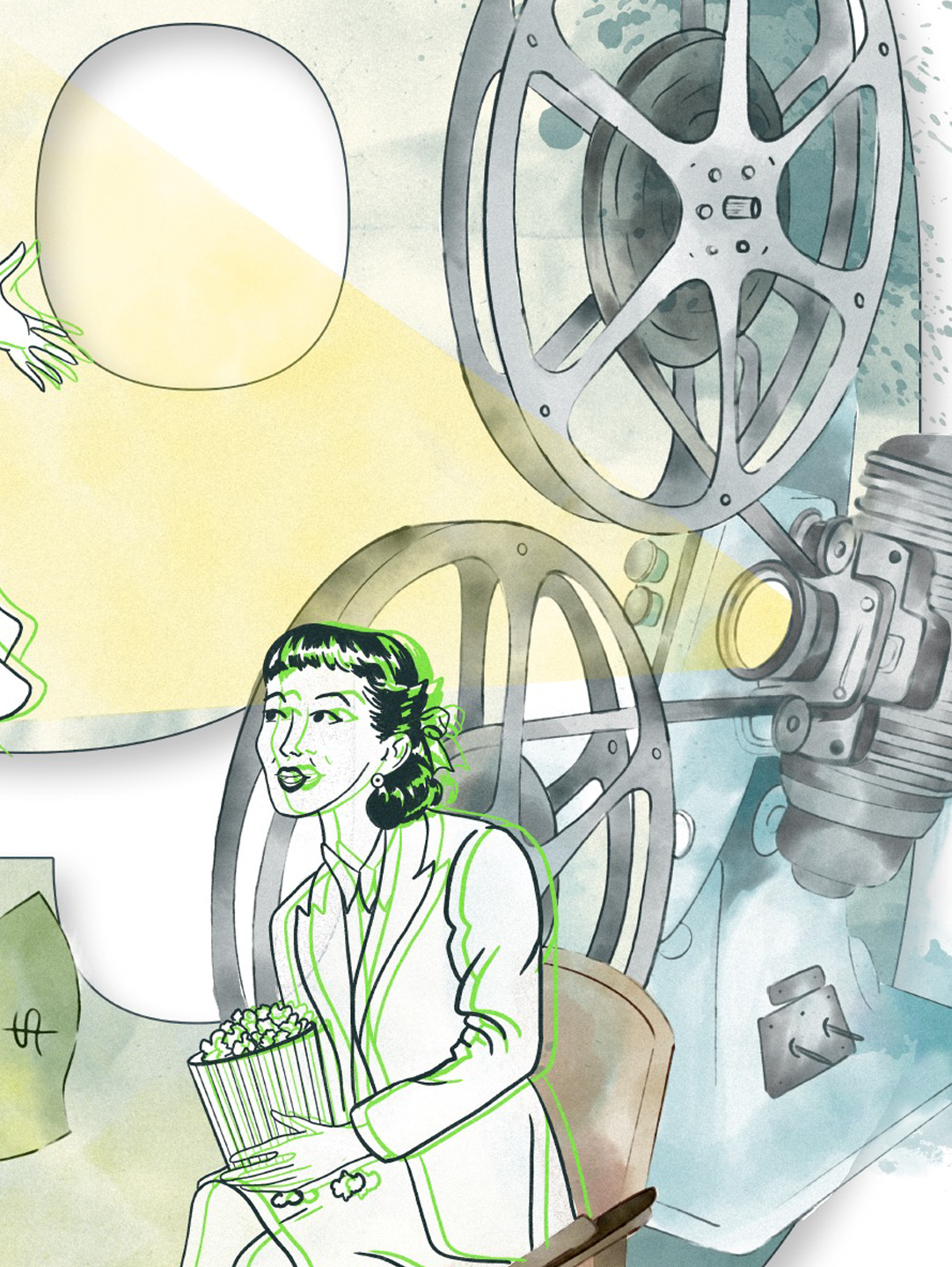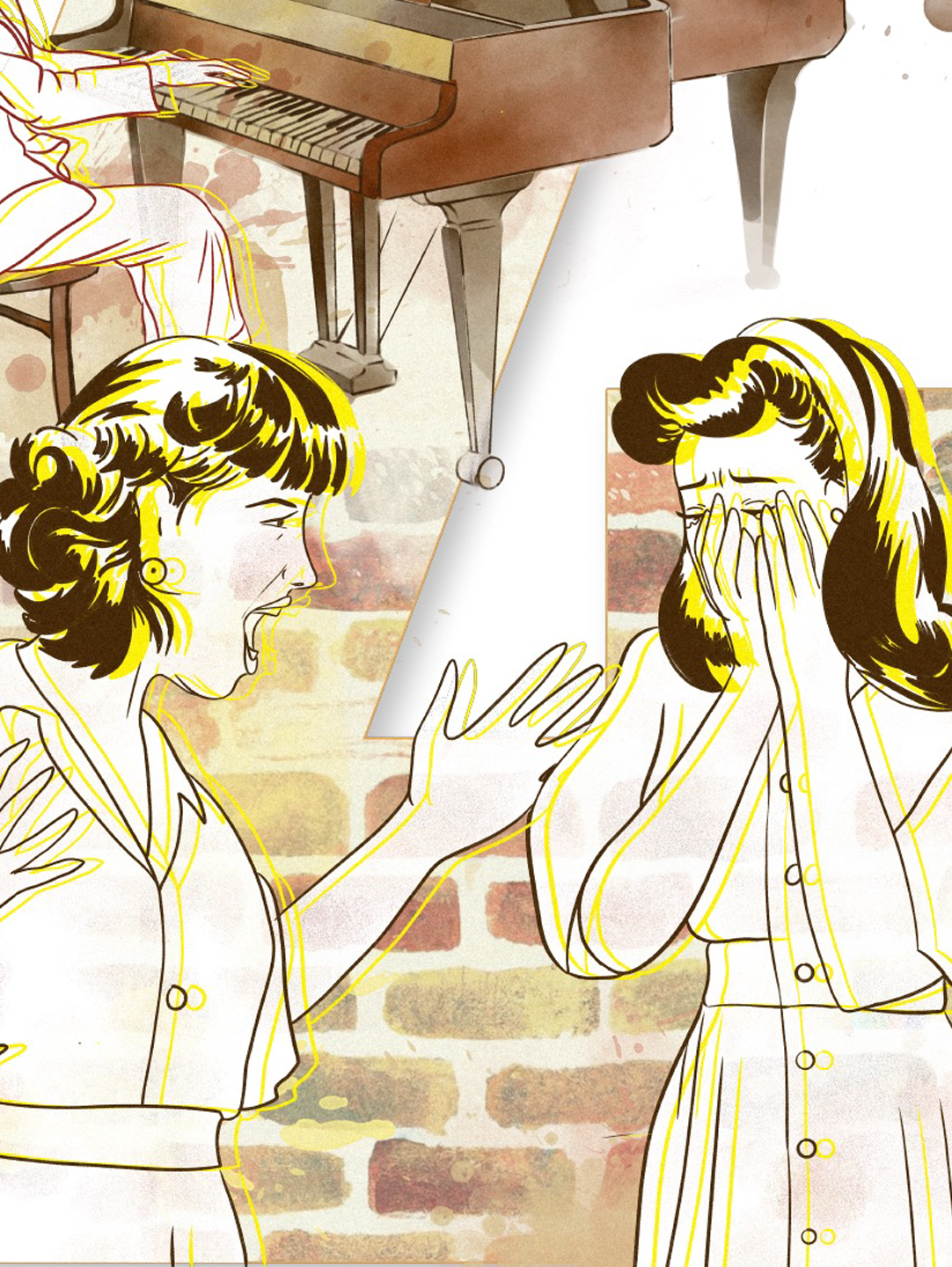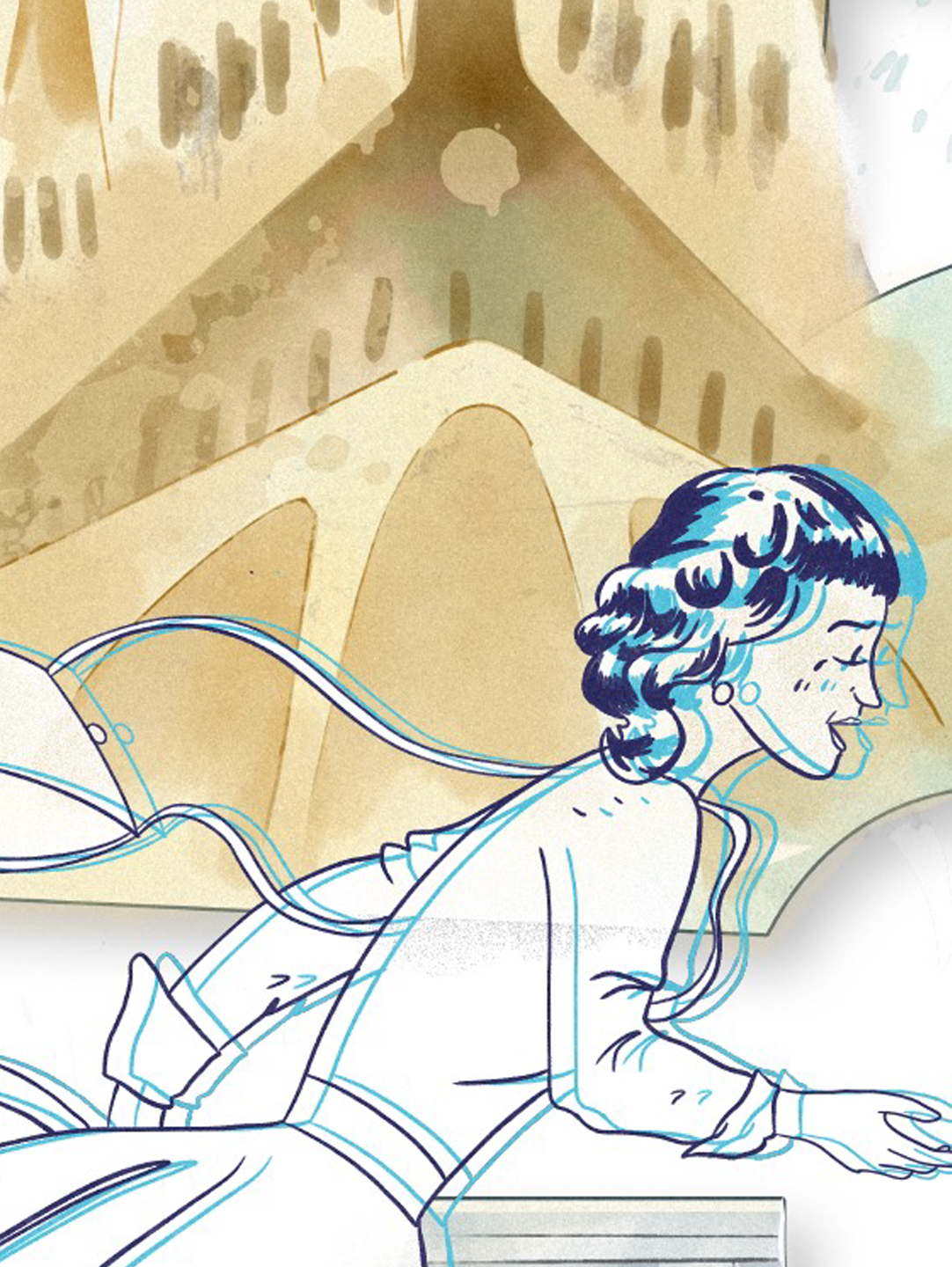Adobe Photoshop
Procrate
Adobe After Effects
Procrate
Adobe After Effects
CREDITS:
Creative supervisor: Natalia Arias
Copywriter: Ana Benítez
Creative supervisor: Natalia Arias
Copywriter: Ana Benítez
Struggling for Identity
It is a work of Spanish literature that follows Andrea, an 18-year-old girl who moves to Barcelona to study at the university and lives with her uncles in a dysfunctional and violent environment during the Spanish post-war period. The author portrays a city plagued by poverty and corruption, and how this affects the protagonist as she tries to find her place in the world.
The novel is divided into three parts that reflect Andrea's transformation in a few months, as she is drawn into the madness and desperation of the people around her. As the plot unfolds, secrets about her family and social environment are revealed, in a subtle critique of the society and culture of the time.
Sketch of the visual proposal
Nightmare and oppression
The illustration depicts Andrea, an eighteen-year-old arriving at her grandparents' house in Barcelona with high hopes. However, as she sets foot in the house at Aribau 36, her enthusiasm begins to fade.
The house appears desolate and in ruins, and Andrea feels trapped and suffocated in an oppressive and disheartening environment. Sitting on her suitcase and crying, Andrea displays her desperation and sadness, while her aunt Angustias shouts from a balcony, further worsening the atmosphere. The aunt becomes an authoritarian and abusive figure, making Andrea feel like a victim of her tyranny and enduring constant nervous tension.
The illustration captures the nightmare Andrea is living, starkly contrasting with her dreams and expectations, suggesting intense emotional conflict in the young woman.
Freedom and indifference
The second illustration of "Nada" by Carmen Laforet depicts Andrea in a movie theater, reveling in her newfound freedom. She now feels unrestrained and liberated, unburdened by the constraints of time, thanks to her control over her orphan's pension.
The image symbolizes her role as a mere spectator to the toxic situations within her family, portrayed on the screen by her uncle Juan mistreating her aunt Gloria—circumstances she has chosen not to pay attention to. While this freedom entails taking on new and unfamiliar responsibilities, Andrea views it as a period of improvement and wouldn't trade her new lifestyle or independence for a well-provided meal. Consequently, she decides to stop eating at home and manages her own money, despite the severe hunger this decision brings during this challenging period.




Secrets and perplexity
This image captures a moment of emotional intensity between Andrea and Ena, reflecting the bewilderment Andrea feels at the sudden distance her friend imposes between them.
In the background, Román plays the piano, symbolizing his centrality in the conflict that has arisen between the friends. As the problem persists over several days, Andrea's uncertainty grows until an unexpected revelation clarifies Ena's strange behavior over the past few months, strengthening their friendship.
This twist in the situation dissipates the confusion Andrea had experienced until then, allowing her to move towards a greater understanding.
Despair and hope
The scene depicts Andrea fleeing from Barcelona to Madrid, where a new life awaits her. The image represents Andrea's despair after living in an oppressive and violent environment at home, where she feels weakened, depressed, and tormented. However, her fortune changes when she receives a letter that gives her a new opportunity to start anew.
In the illustration, a skull can be seen, evoking the death of Román, but it also symbolizes the death of the past and the hope for a better future. The illustration represents the end of a stage in which Andrea learned to survive and the hope of embarking on a new life.